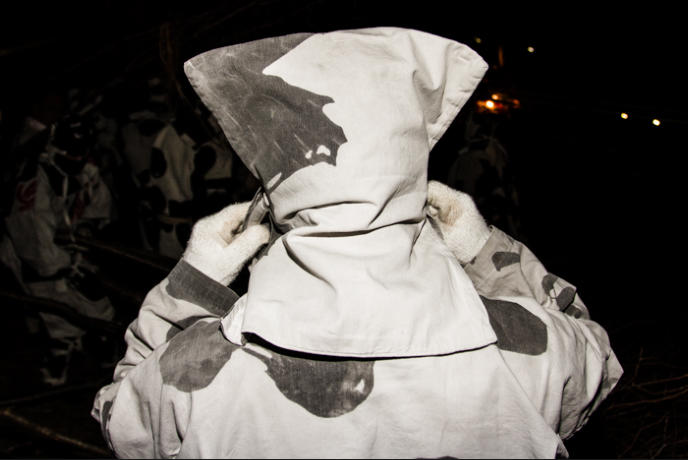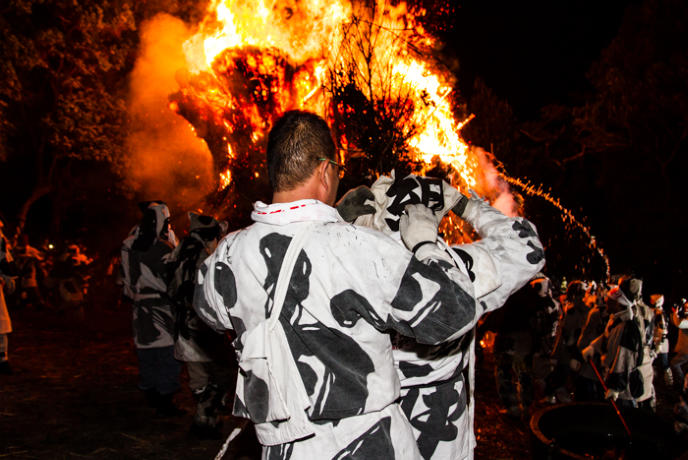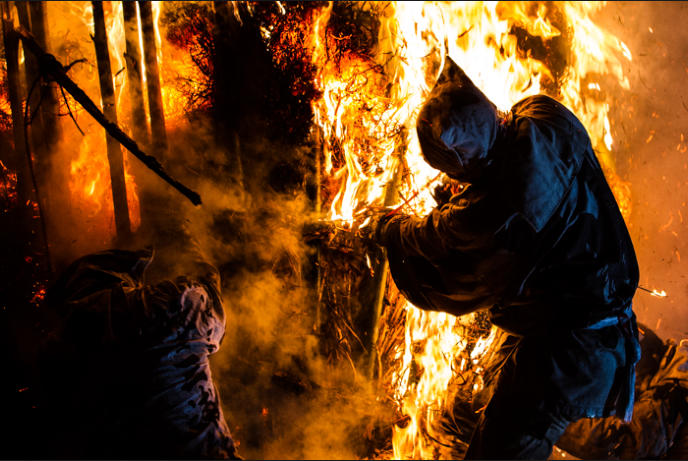













The magazine of the art-form of the photo-essay
“A free, really high quality photo-essay magazine. Fabulous!”
Stephen Fry. British actor, writer and film & documentary maker

Jan 2015 back issue



by Thaddeus Pope
One of the most extraordinary festivals in Japan, Toba-dai-kagaribi (The Great Bonfire of Toba) is a designated
National Intangible Folk Cultural Property with roots that can be traced back 1,200 years. The purpose of the festival,
which takes place in February at the Toba-Shinmeisha shrine in Nishio City (in the Chūbu region of Honshū), is to
forecast the weather and harvest of the coming year by way of a highly ritualised and potentially dangerous competition
between two teams of local men – one from the east area of the Toba River and one from the west.
On the eve of the festival, in keeping with a centuries-old tradition, two enormous torches, known as suzumi, are built
at the Toba-Shinmeisha shrine. A sacred tree is placed at the centre of each suzumi during its construction and twelve
ropes, representing the twelve months of the year, are wrapped around its base. With an outer frame made from sixty
bamboo poles tied tightly together, and a core filled with huge bundles of sun-dried Japanese pampas grass, each of
these highly flammable towers stands approximately five meters tall and weighs more than two tons.
The following day, in accordance with the Shinto practice of ritual purification known as misogi, participants cleanse
themselves of their sins and impurities by washing thoroughly in the sea nearby. Once the ritual of misogi is complete,
the men make their way to the Toba-Shinmeisha shrine where they present tamagushi (a form of Shinto offering) and
receiving blessings. Later that evening both teams emerge from the shrine wearing traditional festival costumes and
head towards the suzumi where further offerings are made for a good harvest. Shortly thereafter, the suzumi are set
alight and the contest begins to see which team can remove the sacred tree and twelve ropes from the burning towers
fastest - a difficult task made all the more challenging as it must be accomplished by hand, with minimal protection
from the intense heat and smoke produced by the massive bonfires. Once removed from the suzumi, the remains of the
sacred tree and the twelve ropes are brought to the Toba-Shinmeisha shrine by the winning team as an offering. The
weather forecast and quality of the harvest for the coming year are then divined from their condition.
In accordance with tradition, the unusual costumes worn by festival participants are made from the thick cotton
banners of previous festivals. Because of the catlike appearance of their hoods, the men are often referred to as ‘neko’
(cats) by local townspeople.
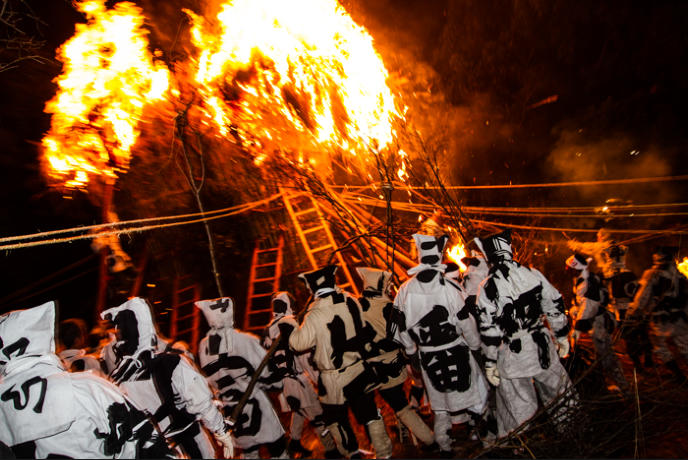
With prayer rites finished and offerings for a good harvest made, torches are used to light the giant towers while the
two teams wait in anticipation.
Though they provide only minimal protection, the men must ensure that their hoods and gloves are properly secured to
minimise the risk of injury.
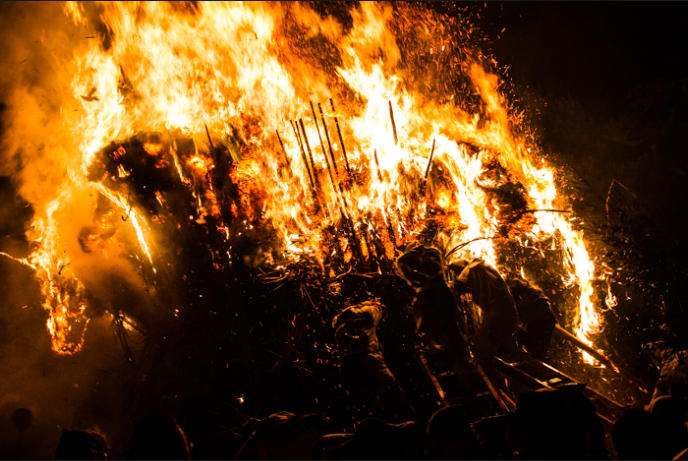
The hunt for the shingi (holy tree) begins as a group of four teammates attempt to destabilise the structure of the
suzumi by shaking it vigorously.
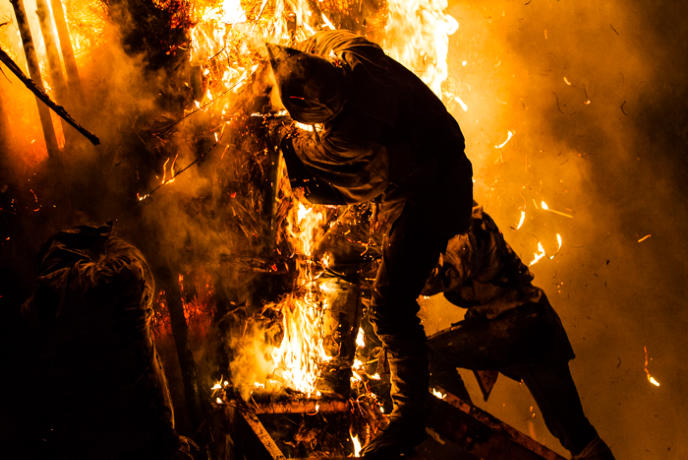
With flames lapping at their faces, the men hurriedly attempt to dismantle the burning bamboo frame of the suzumi.
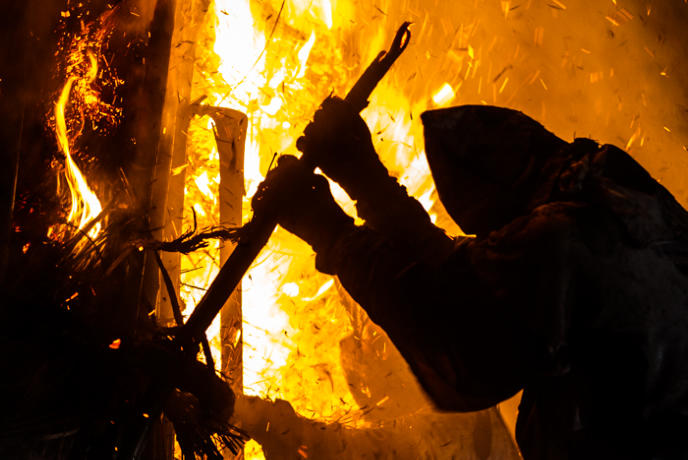
One man is able to partially weaken the suzumi by breaking its bamboo frame with his hands.
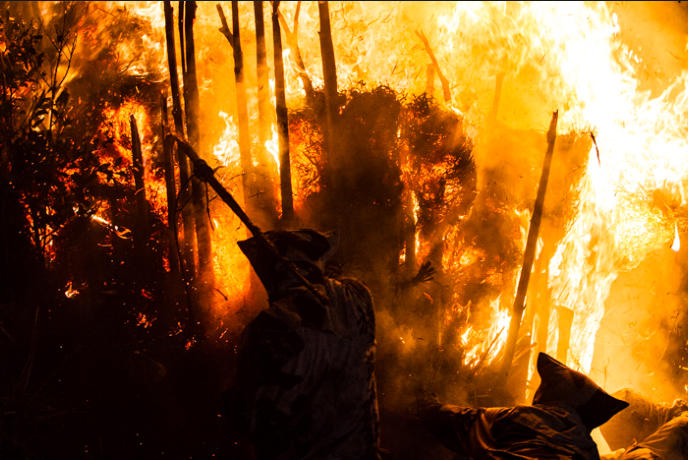
In an impressive display of courage and teamwork, the men tear at the towering inferno, forcing it apart and weakening
its structure.
Large water troughs are located next to each suzumi, which are used to douse clothes and put out fires. Paramedics
and firefighters are also on standby.
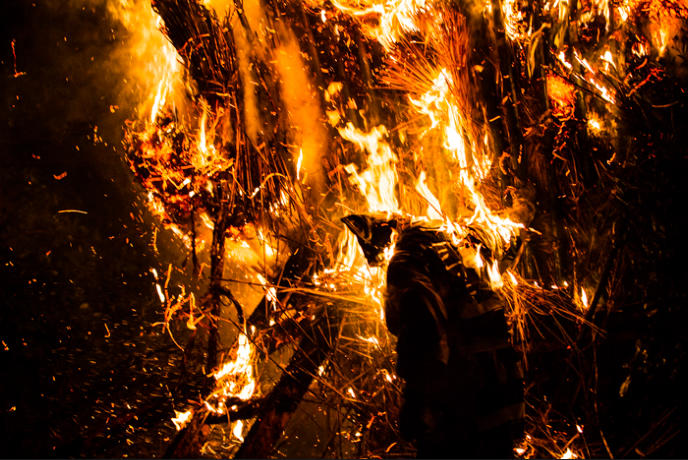
With his costume on fire, one man is forced to jump from the burning suzumi.
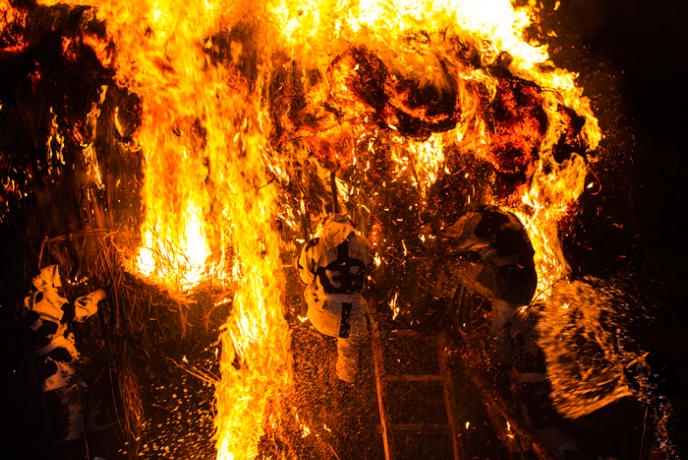
With bundles of burning grass falling on their heads and smoke billowing in their faces, the men violently shake the
burning suzumi.
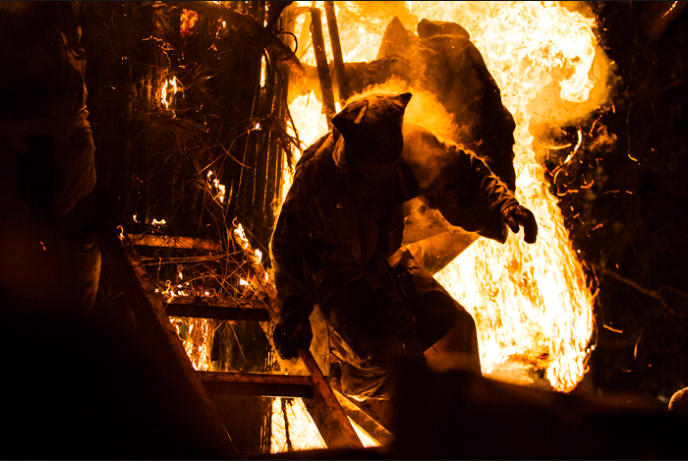
When the heat and smoke becomes too much to bare, the men are forced to jump from their ladders.
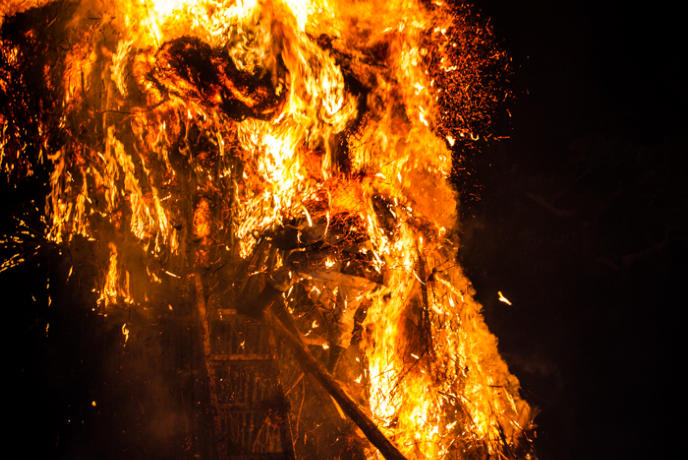
As a large portion of the suzumi collapses, a wall of flames and smoke surrounds one man.
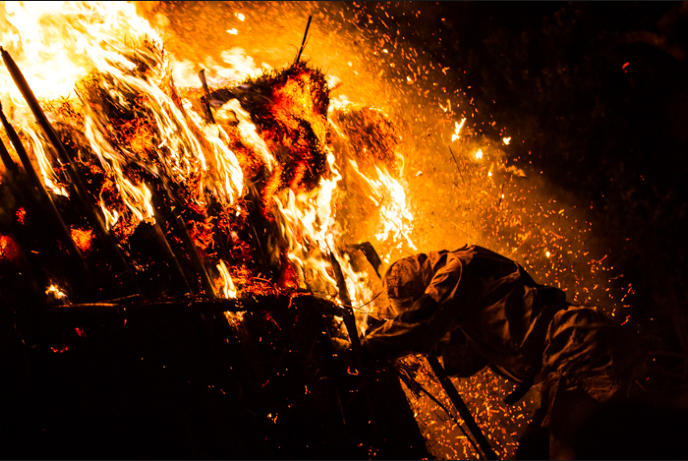
Though visibly exhausted by the task at hand, the men continue to shake and tear at the towers.
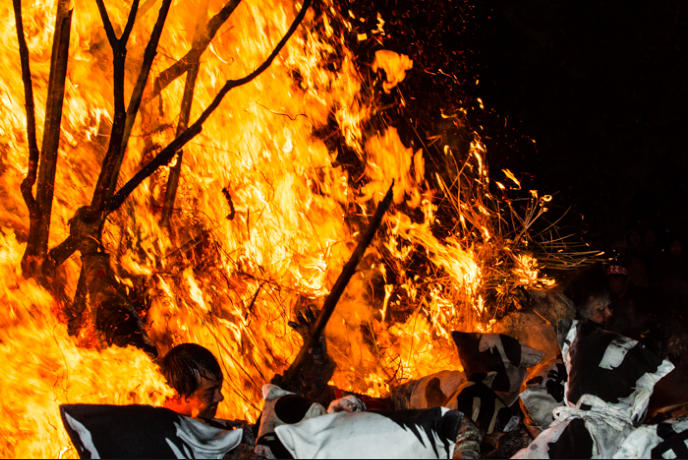
With the structure of the suzumi compromised, the men are able to use their combined weight and strength to pull it
over.
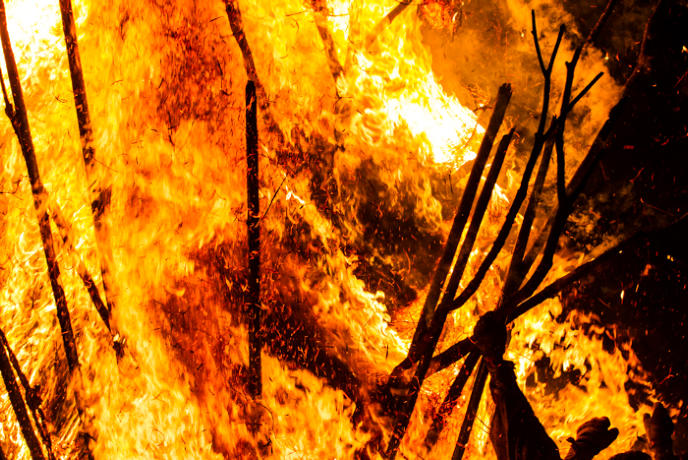
As the suzumi topples onto its side, an enormous wall of fire engulfs the men.
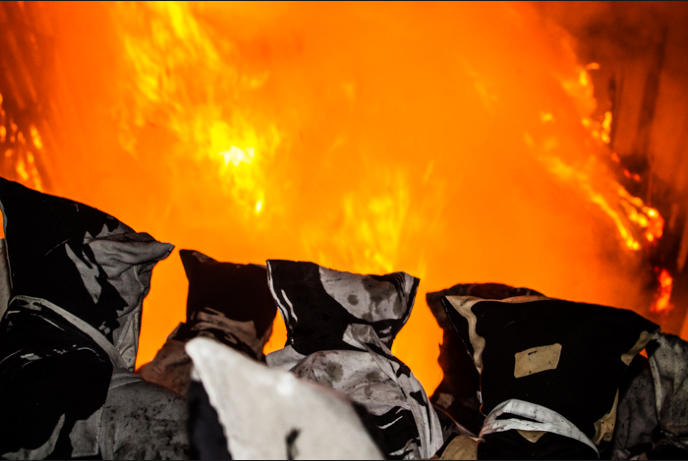
Once the holy trees have been retrieved, they are taken to the Toba-Shinmeisha-shrine as an offering. The remaining
men stand around the burning remains of the suzumi.

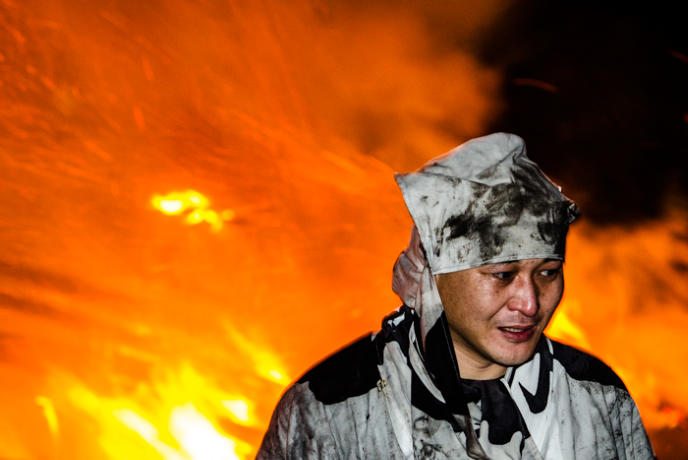
The men remove their masks to reveal faces fatigued by the immense physical effort of the task.
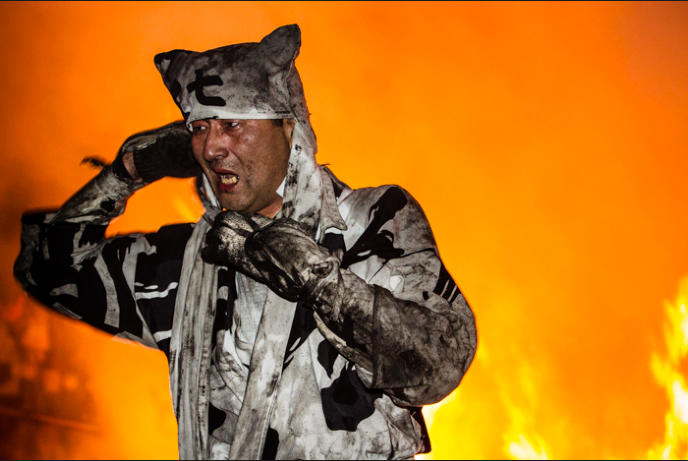
Where the towers once stood, now only fire remains.

